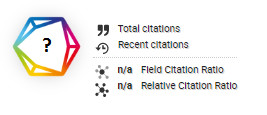Study of Medicinal Plants Ethnopharmacy in Antihypertension in Karang Tunggal, Tenggarong Seberang, East Kalimantan
DOI:
https://doi.org/10.46984/sebatik.v28i2.2466Keywords:
Ethnopharmacy, hypertension, medical plants, use value, single coral.Abstract
Ethnopharmacy is a branch of pharmaceutical science that studies the use of medicines and treatments practiced by specific ethnic regions or groups. Its scope primarily includes medicines and treatments derived from natural ingredients. Hypertension is a condition characterized by elevated blood pressure, with systolic blood pressure equal to or greater than 140 mmHg and diastolic blood pressure equal to or greater than 90 mmHg. This study aims to identify and document medicinal plants used as antihypertensive remedies in Karang Tunggal Village. The research employed descriptive and quantitative methods, with sampling conducted using the purposive sampling technique. Data were collected by identifying medicinal plants based on their local names, the plant parts used, and their Use Value (UV). The UV indicates the species that are considered the most significant within the community. The findings revealed 14 medicinal plants with antihypertensive properties, including cucumber, Mengkudu (noni), Sungkai leaves, Salam leaves, among others. Among these, cucumber demonstrated the highest Use Value (UV) at 0.15. The study also documented the methods of usage, which included drinking and eating, while the dosage forms involved decoctions, juices, and raw pieces. The processing methods primarily consisted of boiling, squeezing, and using the plants whole.
References
Angraeni, N. (2020). Distribusi Penderita Hipertensi Berdasarkan Faktor Risiko di Puskesmas Tanate Kecamatan Bulukumpa Kabupaten Bulukumba Periode Juli 2019-Juni 2020. Unhas, 1-49.
Antika, I. D., & Mayasari, D. (2016). Efektivitas Mentimun (Curcumis Sativus L) Dan Daun Seledri (Apium graveolens L) Sebagai Terapi non-Farmakologi Pada Hipertensi. Majority, 5(5), 119-123
Asih, S. W. (2018). Pengaruh Rebusan Daun Salam Terhadap Penurunan tekanan darah pada lansia penderita hipertensi di wisma seruni UPT PSLU Jember. The Indonesian Journal of Helath Science, 169-172.
Djo, M., & Syafah, L. (2017). Etnofarmasi Tumbuhan Obat di Dusun Nuamuzi Desa Warupele 1 Kecamatan Inerie Kabupaten Ngada Flores Nusa Tenggara Timur. Repository Poltekkespim, 1-5.
Firmansyah, D., & Dede. (2022). Teknik Pengambilan Sampel Umum dalam Metodologi Penelitian: Literature Review. Jurnal Ilmiah Pendidikan Holistik (JIPH), 1(2), 85-114.
Fitri. (2019). Potensi Ekstrak Etanol daun Beluntas (pluchea indica Less.) sebgai diuretik terhadap tikus putih jantan Galur Wistar. Uniersitas Brawijaya, 1- 24.]
Ilkafah. (2018). Daun Karsen (Muntingia Calabura L.) sebagai alternatif terapi pada penderita gout artritis. Pharmay Medical journal, 1(1), 33-41.
Khairiyah, N., Anam, S., & Khumadi, A. (2016). Studi Etnofarmasi Tumbhan Berkhasiat Obat Pada Suku Banggai di Kebupaten Banggai Laut, Provensi Sulawesi Tengah. Galenika, 2(1), 1-7.
Kodir, R. A., MW, M., & Iskandar, Y. (2017). Etnofarmasi dan ulasan Bioprospektif tumbuhan obat liar dalam pengobatan tradisonal Kampung Adat Cikondang, Kecamatan Pangelangan, Kabupaten Bandung, Jawa Barat. Farmaka, 15(1), 26-44.
Latief, M., Fisesa, A. T., Sari, P. M., & Tarigan, I. L. (2021). Aktivitas Antiinflamasi Ekstrak Etanol Daun Sungkai (Peronema canescens Jack) pada Mencit Terinduksi Karagenan. Jurnal Farmasi Sains dan Praktis (JFSP), 7(2), 144-153.
Moelyono, M. (2017). Etnofarmasi. Yogyakarta: Deepublish.
Mulyadi, Arif, Sepdianto, T. C., & Hernanto, D. (2019). Gambaran Perubahan Tekanan Darah Pada Lansia Hipertensi Yang Melakukan Senam Lansia. Journal of Borneo Holistic Health, 2(2), 48-57.
Nadila, F. (2014). Antihypertensive Potential Of Chayote Fruit Extract For Hypertension Treatment. J Majority, 3(7), 34-38.
Novitaningtyas, T. (2014). Hubungan Karakteristik (Umur, Jenis Kelamin, Tingkat Pendidikan) Dan Aktiitas Fisik Dengan Tekanan Darah Pada Lansia di Kelurahan Makamhaji Kecamatan Kartasura Kabupaten Sukoharjo. Naskah Publikasi, 1-14.
Nugroho, K., Carden, F., & Antlov, H. (2018). Pentingnya pengetahuan Lokal. Jakarta : Kementrian PPN/Bappenas
Oktaviani, T., & Maganta, S. (2018). Aktivasi Farmakologi Rosella. Farmaka, 16, 345-341.
Purwono , J., Sari, R., Ratnasari, A., & Budianto, A. (2020). Pola konsumsi garam dengan kejadian hipertensi pada lansiasalt consumption pattern with hypertension in elderly. Wacana Kesehatan, 5(1), 531-542.
Sammy, M.N., Sachiko S., Katsuyoshi., Hideaki O., and Mohammed S.K. (2015). Chemical Constituents and Biological Activities of Genus Ruellia. International Journal of Pharmacognosy, 2(6), 270-279.
Sanggiang, P., & Sari, M. (2017). Efektivitas teh daun sirsak (annona muriata Linn) terhadap hipertensi. Majority, 6(2), 49-54.
Savitri, A. M. (2015). Potensi Ekstrak Air dan Etanol Kumis Kucing, Pegagan, Tempuyung, dan Sambiloto Sebagai Antihipertensi Serta Profil Senyawa Penirinya. Institut Pertanian Bogor, 1-23.
Sugiyono, P. (2017). Metode Penelitian Kuantitatif Kualitattif dan R&D.Bandung: Alfabeta.
Suryarinilsih, Y., Fadriyanti, Y., & Hidayatullah. (2021). Rebusan Seledri Terhadap Penurunan tekanan darah pasien hipertensi. Menara Ilmu, 15(2), 134-140.
Syahputra, G. S., Astuti, M. A., Piter, P., & Arbain , D. (2021). Kajian Etnofarmasi dan Fitokimia tumbuhan obat Kampung adat Urug, Kecamatan Sukarjaya, Kabupaten Bogor, Jawa Barat. Jurnal Tumbuhan Obat Indonesia, 14(1), 14-28.
Syehibat, H. (2021). Uji Aktivitas Ekstrak Etanol HErba Sirih Bumi (Peperomia Pellucida L., Kunth) terhadap hipertensi tikus. Universitas Bhakti kencana, 1-24.
Zebua, D., Sunarti, Harahap , A., Ningsih, F., Zalukhu, A. P., & Masrini. (2021). Rebusan dan Kelor berpengaruh terhadap tekanan darah penderita Hipertensi. Jurnal Penelitian Perawat Profesional, 3(2), 299-406.
Zuhana, Pahrul, D., & Sepriyanti, E. (2022). Pengaruh Pemberian Seduhan Air Bawang Putih terhadap Tekanan darah pada pasien Hipertensi. Jurnal Ilmiah Multi Science Kesehatan, 14(1), 16
Downloads
Published
How to Cite
Issue
Section
License
Copyright (c) 2024 Putri Rinda Pratiwi, Juliyanti, M Ecky Biondi, Supardi

This work is licensed under a Creative Commons Attribution 4.0 International License.
Authors retain all their rights to the published works, such as (but not limited to) the following rights; Copyright and other proprietary rights relating to the article, such as patent rights, The right to use the substance of the article in own future works, including lectures and books, The right to reproduce the article for own purposes, The right to self-archive the article








